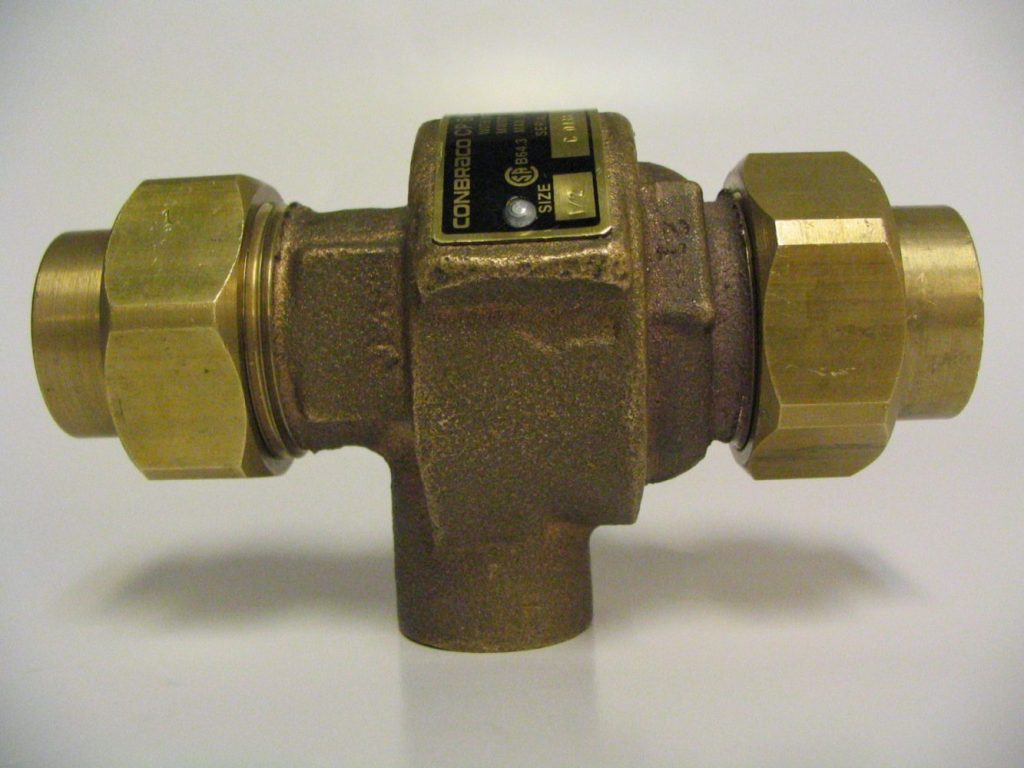Plumbers often use dual check valve backflow preventer with discharge atmospheric port (DCAP) in their installations. It is a product well-liked by professionals, and understandably so! It offers a multitude of advantages and is cost-effective, as long as it is properly installed and maintained. Unlike the verifiable backflow preventer device, this one does not require annual field testing; however, it must be replaced regularly to ensure effective protection.
The DCAP is a backflow preventer device with two check valves and an atmospheric port. The two check valves allow water to flow in one direction, preventing backflow. Unlike other devices, it provides additional protection thanks to its atmospheric port.
This non-field testable backflow preventer device is worth considering in a low-to-medium risk situation when installed to the appropriate standards (CSA B64.3). It is important to note that it cannot replace a reduced pressure backflow preventer device (RP), as it is not suitable for high-risk situations. However, it could even replace a double check valve backflow preventer assembly (DCVA).
Best practices :
- Economical and easy to maintain.
- A properly used and well maintained DCAP is a good substitute for DCVA.
- The DCAP must be visible at all times to see if it is spitting water.
Bad practices :
- It cannot be installed at a water inlet.
- Its small size does not allow it to be installed on a pipe larger than one inch.
- The DCAP cannot be installed in enclosed spaces.
DCAP is used to isolate boilers in single-family homes (without the use of chemicals). The water circulates in a closed circuit under moderate pressure.
In short, DCAP is an attractive option, as it does not require annual field testing for low-to-moderate risk. This is especially true since its maintenance and replacement are relatively straightforward. Since it is not a field-testable backflow preventer device, it is still important to ensure that its installation and maintenance are impeccable. All too often, it is incorrectly installed and does not offer the desired protection, hence the importance of installing it properly, replacing it regularly, as well as paying particular care to its maintenance.
Reference:
